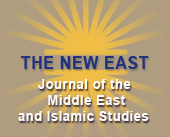Bedouin Cemeteries in the Negev: Typology and Spatial Distribution, 1900-1966
Emir Galilee and Ruth Kark
Although nomadic societies, and especially the Bedouin, have been widely studied from the late nineteenth century onwards, the issue of their burial customs has received scant attention. This paper is part of a wider study dealing with the burial patterns of Negev Bedouin society and how these reflect spatial, social and cultural changes, from the founding of Ottoman Beersheba (1900) until the end of Israel’s military rule (1966). The research comprises two years of field work, accompanied by archival research, aerial photographs, maps and other sources.
The preliminary typology of cemeteries reflects a hierarchy of large tribal federations, tribes, and specific lineages. Also discussed are individual graves and the patterns of unique cemeteries for children. Details on the location, social structure and physical development of each cemetery are presented.
The findings raise questions about determinants of the location of cemeteries in nomadic and semi-nomadic Bedouin society, the creation and development of the cemeteries, the territorial dimension of space and the sedentarization process as reflected in the cemeteries. All these issues are examined in relation to general social, cultural and political processes.

